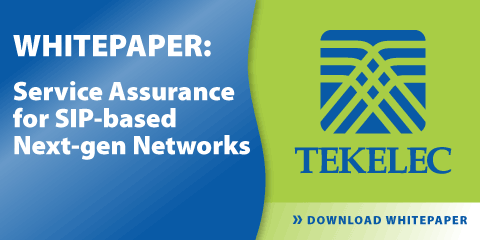
article page
| 1
| 2
| 3
| 4 |
Network Complexity
Network troubleshooting is becoming increasingly complex, especially for operators who already operate multiple networks using different technologies and protocols. Because of the hybrid nature of existing networks, the migration to a converged all-IP network will take many years. Providers will have to support a variety of networks and interconnections between the networks well into the future. Each new technology requires new interfaces and protocols. The delivery of mixed services introduces another layer of complexity. Operators support a greater number of network elements to blend real-time services such as voice and video with non real-time applications like presence, availability and user preferences. |
|
Operating a hybrid network introduces a myriad of business, management and security issues.
|
|

end interrelationships between each network and its resources presents a formidable challenge. Complex networks and cross-domain signaling call for operational tools and personnel expertise that span the entire network.
Existing tools built for legacy networks often do not support new network protocols such as SIP, IMS service control (ISC) and Diameter. Monitoring personnel within the operator’s organization are typically trained in a single technology and its related protocols.
|
|
|
|

Advanced technologies, consolidation, new entrants, and global roaming are forcing operators to manage multi-vendor, multi-protocol networks. Carriers want the freedom to evolve their networks but must carry the burden of legacy resources and technologies in their own networks as well as in partner networks to which they interconnect.
Mediation is required to interconnect the disparate technologies. And, it involves more than linking one network type to another such as fixed and mobile. Mediation challenges exist within networks that may contain not only different technologies such as bearer independent call control (BICC) protocol and session initiation protocol (SIP), but also different versions of the same protocol, like customized applications for mobile network enhanced logic (CAMEL) v1 and CAMEL v2. Additionally, providers must manage the interaction and mediation between resources such as mobile switching centers (MSCs) and service control points (SCPs) from multiple vendors that may have vendor-specific implementations of the same protocol.
Lack of Experienced Personnel and Adequate Tools
As fixed, mobile and IP networks converge to deliver blended services, grasping the end-to-
|
|

As a result, providers monitor each network independently with tools and personnel dedicated to each technology. As new technologies or services are deployed, they must continue to invest in new equipment and employee training. This approach yields a fragmented view of the network; data is pieced together from a variety of systems and personnel. Most operators lack a common set of applications and the consolidated expertise that can be applied uniformly across all types of network technologies and protocols to gain a holistic view of their operations and services.
Limited Network Visibility
One of the major challenges operators face as they evolve their networks to support Internet VoIP and multimedia sessions is their inability to trace transactions end-to-end across the networks. Complete, real-time visibility and historical data are essential for effective network management, as well as service and revenue assurance.
Many providers have deployed monitoring tools for each technology, but this approach provides just a limited, fragmented view of the network. As networks converge, it is critical to have real-time, end-to-end transaction visibility to proactively pinpoint network anomalies and understand the
article page
| 1
| 2
| 3
| 4 | |
|





